
The back patio is the heart of our two-acre garden in Indianapolis. Convenient to the house, it is a favorite spot for dining and relaxing, and it is a central hub for the paths that connect our back doors and driveway to the garden beyond.
When planting around this pivotal spot, I set out to create a colorful, inviting space with a tropical vibe during the warmer months. I wanted it to have a naturalistic style, with plenty of contrasting textures, forms, and colors so that there would always be something to catch the eye.
To keep the design from feeling chaotic, I used a focused color palette, carefully sited centers of interest, and strategic massing for a calming effect. Here’s how I make it all work.
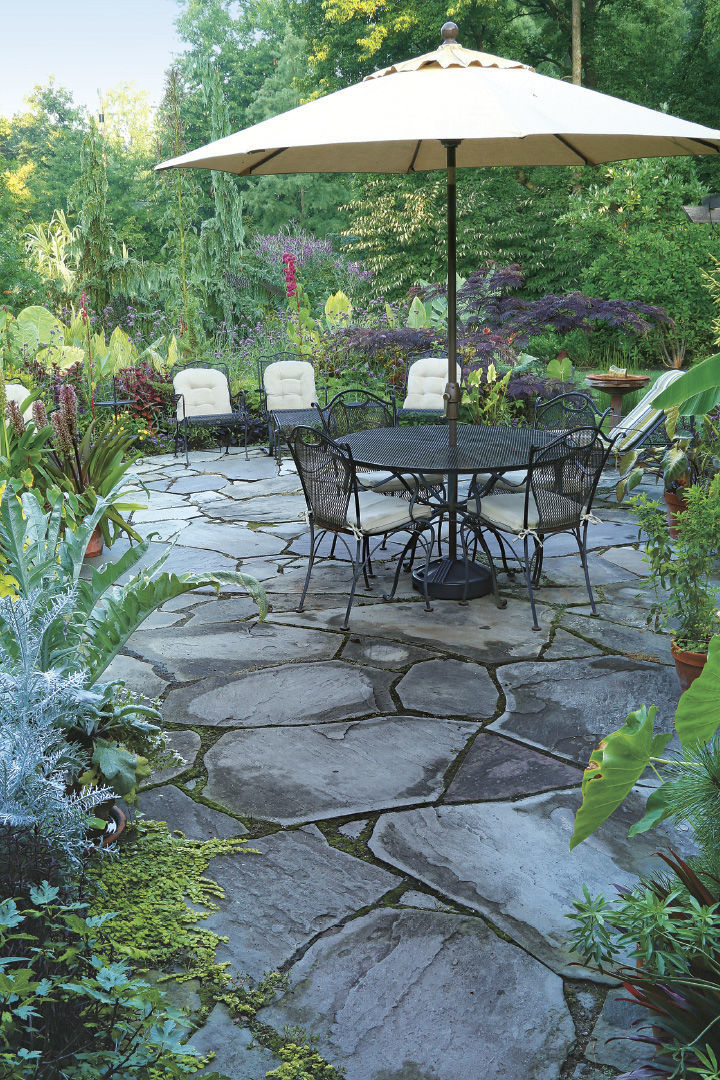
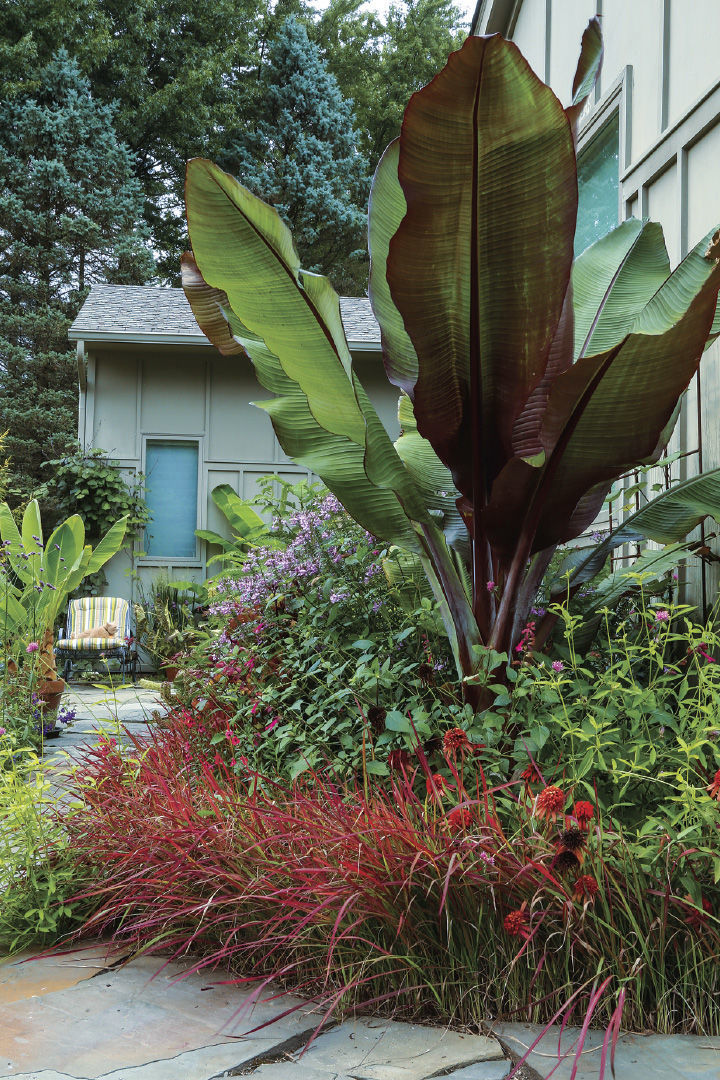
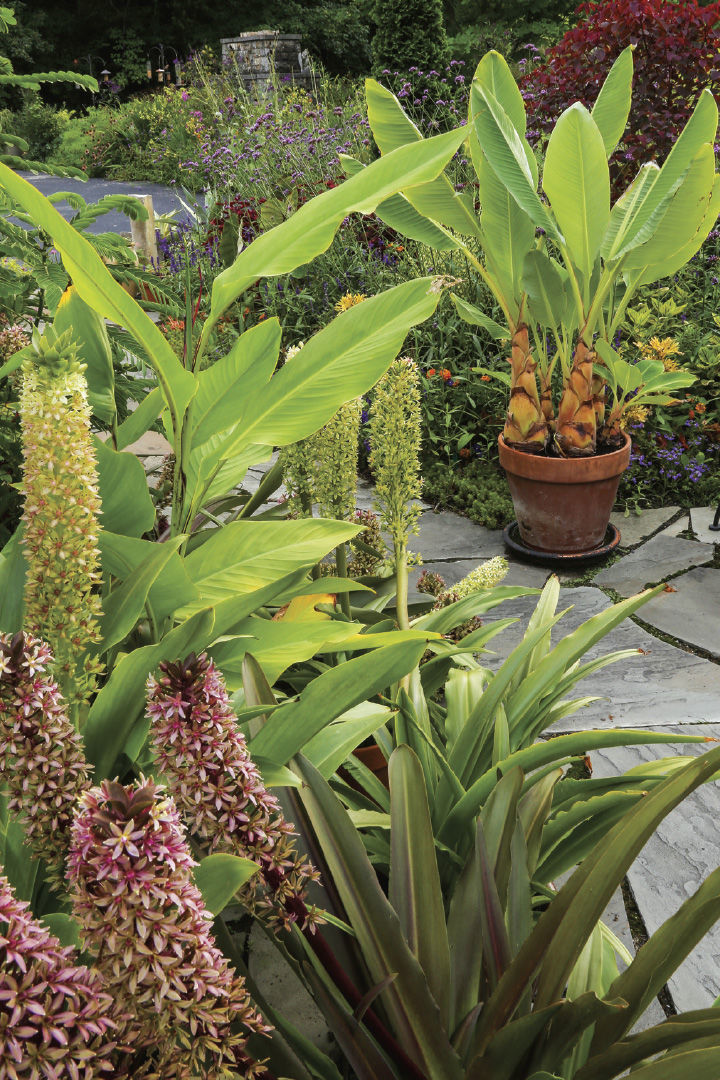
To keep the design from feeling chaotic, I used a focused color palette.
Start with a strong framework
I have been a horticulturist long enough (and have made enough mistakes) that I always begin my design process by dealing with the bones of the entire garden. This holds true in smaller spaces such as the patio garden, where figuring out the location for larger plants or groups of plants came first, before I placed smaller individuals or groups.
This is a garden where annuals and tropicals add seasonal flair, and hardier specimens persist as anchors throughout the year. I love the strong vertical accents provided by ‘Green Arrow’ Alaskan cedar (Chamaecyparis nootkatensis ‘Green Arrow’, Zones 4–8) and ‘Degroot’s Spire’ arborvitae (Thuja occidentalis ‘Degroot’s Spire’, Zones 3–8). These evergreens screen and maintain the visual space of the garden throughout the year. They add height and differ sharply with the general flatness of the surrounding area.
Other structural plants are sited and spaced so they can claim the spotlight as they come into view. Grasses and their relatives contribute their part to the equation and are always left until spring before being cut back.
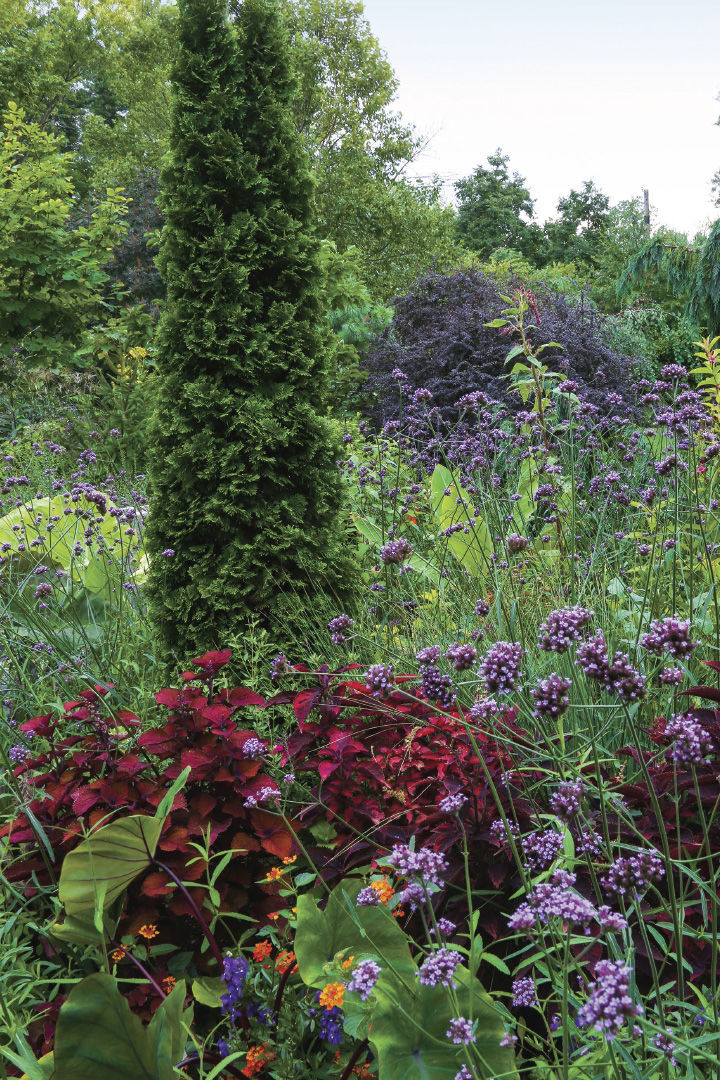
See some of the author’s favorite cold hardy high-impact plants
A focused palette keeps the look cohesive
Repeating key colors helps to tie everything together and connects this space to garden areas farther out. Beyond green, I am drawn most to dark reds and purples, which are repeated often in the patio garden. These colors are so saturated, though, that they can almost recede from view. To brighten up the planting, I use a whole range of greens, yellows, and oranges as contrast and background.
I am continuously learning about and trying unfamiliar plants, but I also appreciate the time-tested plants that come back reliably over many years. Whether I am working with new-to-me varieties or long-time favorites, planting in masses helps keep the experiment looking controlled. Individual specimens inform the choices for the remaining companion plants to achieve the desired effect.
Limiting the number of colors in the composition helps to guide plant choices and to tie contrasting shapes and textures together.
Massing keeps the mood mellow
Masses, including certain small trees and larger shrubs, have a calming effect and are a key part of the garden’s structure. Without their visual weight, all of the smaller-scale annuals I use would feel too busy. For example, I allow tall verbena (Verbena bonariensis, Zones 7–10) to seed in pockets through the bed. I also like to plant a single canna cultivar, often ‘Bengal Tiger’ (Canna ‘Bengal Tiger’, Zones 7–10), in a meandering line or an occasional swath to provide continuity.
I am always leery of the inherent dangers in a formal garden layout. I have found that flexibility is the key to my design aesthetic. Plants cycle through the composition, and if they are lost or removed, their absence may hardly be noticed. With just a little discipline, an adventurous plant palette can come together to create a high-impact design that feels balanced and cohesive.
Read more:
Favorite cold hardy high-impact plants
James Kincannon is a horticulturist in Indianapolis.
Fine Gardening Recommended Products

Gardener's Log Book from NYBG
Fine Gardening receives a commission for items purchased through links on this site, including Amazon Associates and other affiliate advertising programs.

Spear & Jackson 4930FZ Razorsharp Telescopic Tree Pruner
Fine Gardening receives a commission for items purchased through links on this site, including Amazon Associates and other affiliate advertising programs.

SHOWA Atlas 370B Nitrile Palm Coating Gloves, Black, Medium (Pack of 12 Pairs)
Fine Gardening receives a commission for items purchased through links on this site, including Amazon Associates and other affiliate advertising programs.


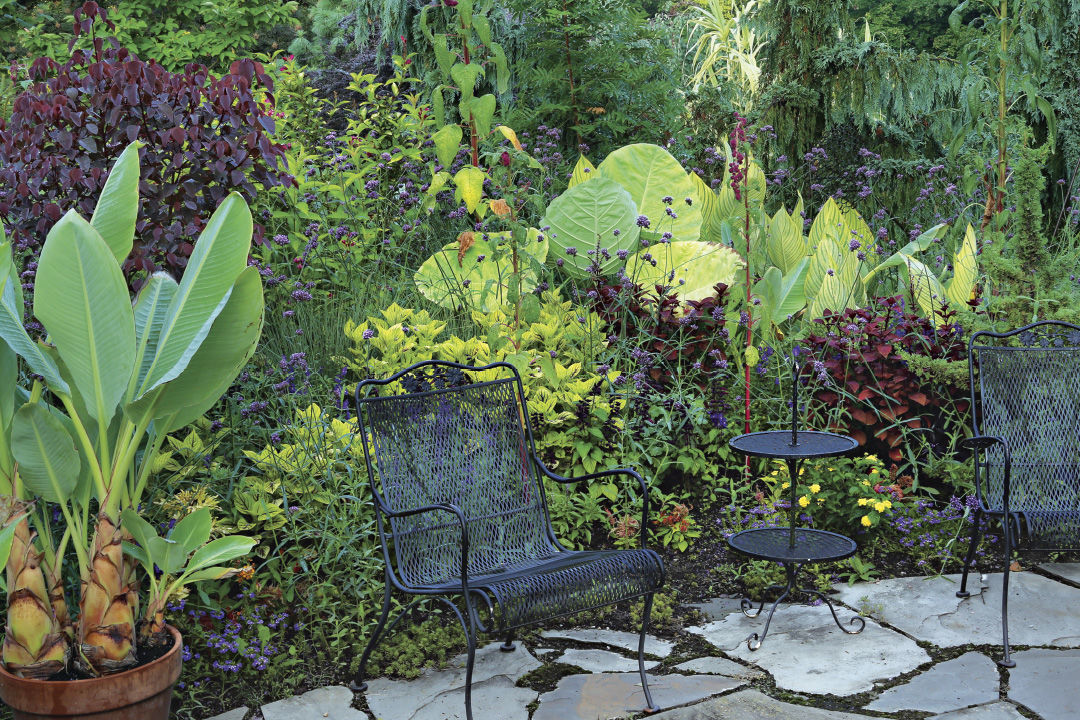
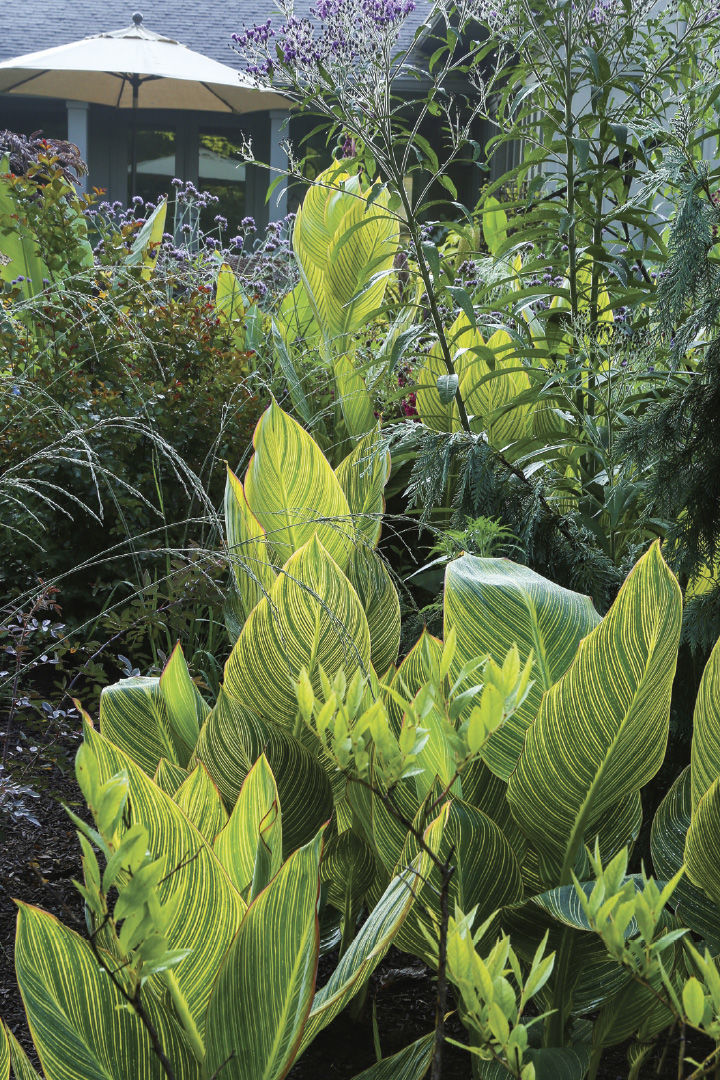

















Comments
Log in or create an account to post a comment.
Sign up Log in